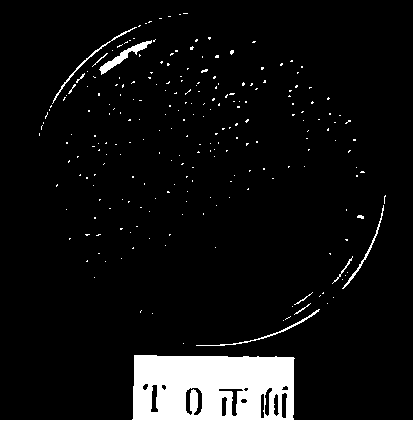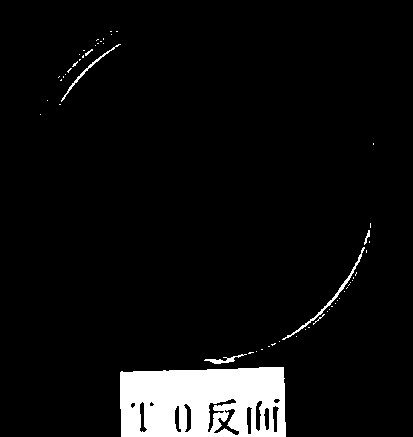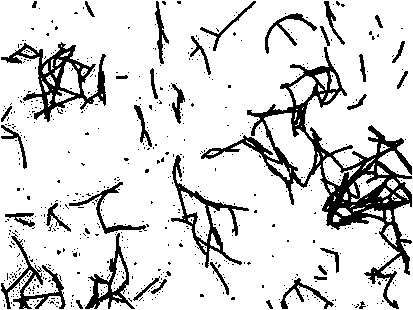Lactobacillus crispatus and its application in gynecological diseases
A Lactobacillus crispatus, vaginal disease technology, applied in application, sexual diseases, resistance to vector-borne diseases, etc., can solve the problems of unable to maintain viable bacterial content, poor colonization ability, unable to meet gynecological clinical conditions, and achieve superior vaginal epithelial cells. Adhesion, Inhibition of Candida albicans, Active Stabilization of Biological Properties
- Summary
- Abstract
- Description
- Claims
- Application Information
AI Technical Summary
Problems solved by technology
Method used
Image
Examples
Embodiment 1
[0055] Embodiment 1, Isolation, inoculation, purification and enrichment culture of Lactobacillus crispatus 262-1
[0056] 1. Isolation and inoculation of Lactobacillus crispatus 262-1 flora: samples were collected using Port. A-Cd system. Use two sterile cotton swabs to collect 1 / 3 of the secretions on the side wall of the subject's vagina, inoculate them in different concentrations on a petri dish containing the prepared Rogosa SL medium within 24 hours, and mark the information. The dish was placed in an anaerobic tank and placed in CO 2 Put the gas-producing bag in a 37°C incubator and incubate for more than 48 hours.
[0057] 2. Purification and enrichment culture of Lactobacillus crispatus strain 262-1: Count the colonies according to their different shapes (surface, edge, etc.) and size, and count the ones with the same shape and size as one, and pick a few of a single colony with the inoculation loop Bacteria are inoculated into MRS solid medium according to the "...
Embodiment 2
[0058] Embodiment 2, Identification and preservation of Lactobacillus crispatus 262-1 strain
[0059] 1. Culture characteristics, staining microscopic examination and morphological characteristics: The colonies obtained after cultivation are shown in Figure 1. The colonies are gray-white round, full in the middle, diffuse around, and irregular; take a smear of the pure culture of the bacteria for Gram staining , the result is as figure 2 , showing Gram-positive, short rods, which can be connected to long chains; the results of electron microscope analysis are shown in Figure 3. Under the electron microscope, the strain has no spores, no flagella, no capsule, and the strain size is 26.824×6.667um. The results showed that the isolated strains were preliminarily determined to belong to the genus Lactobacillus.
[0060] 2. Identification of 16SrDNA gene sequence: DNA extraction was carried out with bacterial genomic DNA extraction kit, and primer pair 8F (5'-AGA GTT TGATCC TGG...
Embodiment 3
[0064] Embodiment 3, Determination of Metabolites of Lactobacillus crispatus 262-1
[0065] one. Determination of lactic acid content in metabolites of Lactobacillus crispatus 262-1: The D-lactic acid detection kit measured the output of D-lactic acid of this strain, and the result was 6.213g / L; the content of L-lactic acid measured by the sensor analyzer was 3.789 g / L, the results are shown in the T0 group data in Table 1 below.
[0066] Table 1 Determination results of lactic acid
[0067] sample D-lactic acid (g / L) L-lactic acid (g / L) T0 6.213 3789 T30 6.334 3.330 T50 6.291 3.225
[0068] two. Determination of hydrogen peroxide content in metabolites of Lactobacillus crispatus 262-1: Semi-quantitative determination of hydrogen peroxide was carried out according to the peroxidase method of Mcgroarty et al. The isolated and identified Lactobacillus crispatus 262-1 was inoculated in H 2 o 2 To identify the MRS-TMB plate, after anaer...
PUM
| Property | Measurement | Unit |
|---|---|---|
| Diameter | aaaaa | aaaaa |
Abstract
Description
Claims
Application Information
 Login to View More
Login to View More - R&D
- Intellectual Property
- Life Sciences
- Materials
- Tech Scout
- Unparalleled Data Quality
- Higher Quality Content
- 60% Fewer Hallucinations
Browse by: Latest US Patents, China's latest patents, Technical Efficacy Thesaurus, Application Domain, Technology Topic, Popular Technical Reports.
© 2025 PatSnap. All rights reserved.Legal|Privacy policy|Modern Slavery Act Transparency Statement|Sitemap|About US| Contact US: help@patsnap.com



